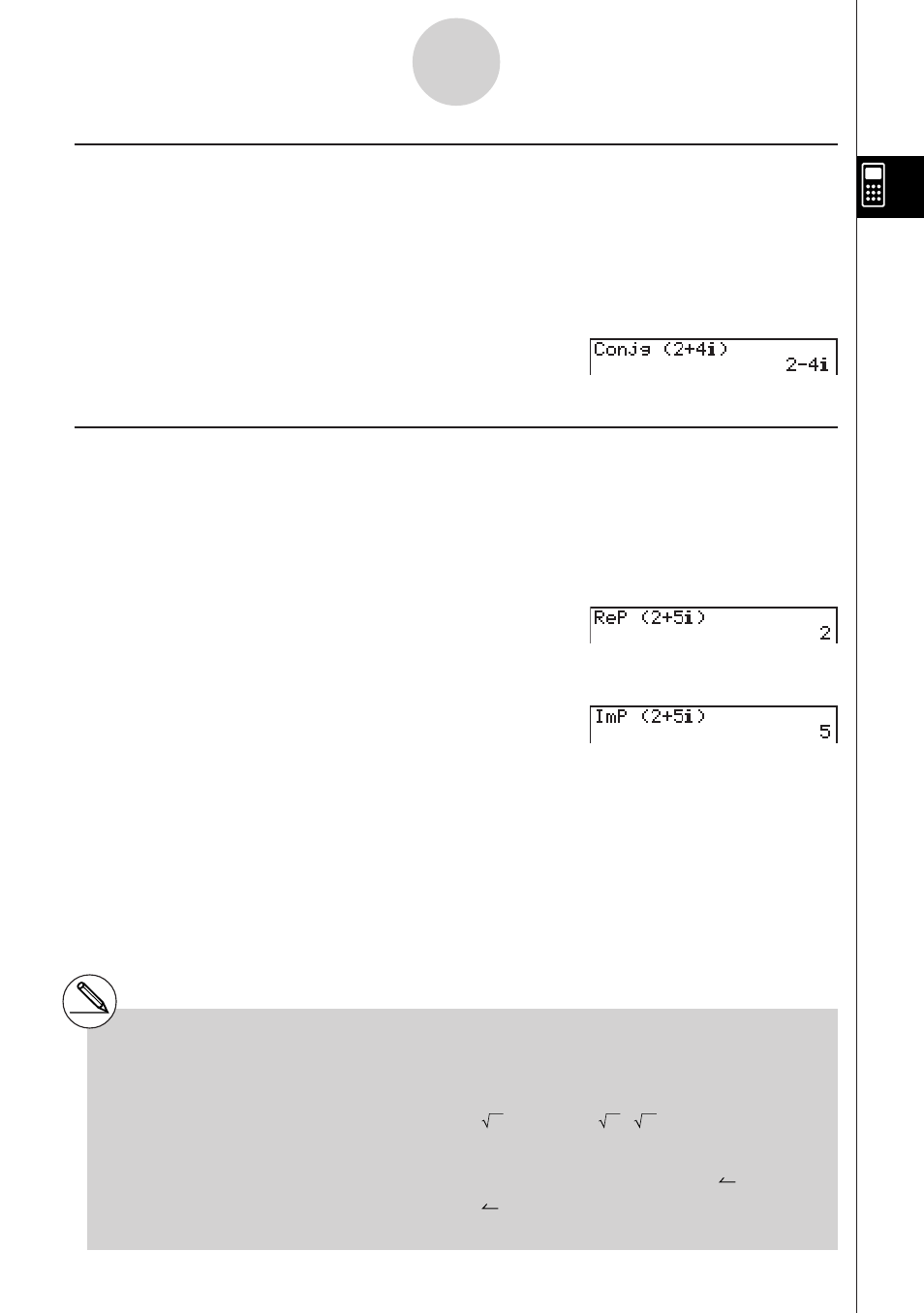Kk conjugate complex numbers, Kk extraction of real and imaginary number parts, A + bi – Casio ALGEBRA FX 2.0 Manual Calculations User Manual
Page 43: A – bi

19990401
k
k
k
k
k Conjugate Complex Numbers
[OPTN]-[CPLX]-[Conjg]
A complex number of the format
a + bi
becomes a conjugate complex number of the format
a – bi
.
○ ○ ○ ○ ○
Example
To calculate the conjugate complex number for the complex number 2
+ 4
i
AK3(CPLX)d(Conjg)
(c+e
!a(
i
))w
k
k
k
k
k Extraction of Real and Imaginary Number Parts
[OPTN]-[CPLX]-[ReP]/[lmP]
Use the following procedure to extract real part
a
and imaginary part
b
from a complex
number with the format
a
+
bi
.
○ ○ ○ ○ ○
Example
To extract the real and imaginary parts of the complex number 2 + 5
i
AK3(CPLX)e(ReP)
(c+f
!a(
i
))w
(Real part extraction)
AK3(CPLX)f(ImP)
(c+f
!a(
i
))w
(Imaginary part extraction)
2-6-3
Complex Number Calculations
# The input/output range of complex numbers is
normally 10 digits for the mantissa and two
digits for the exponent.
# When a complex number has more than 21
digits, the real number part and imaginary
number part are displayed on separate lines.
# When either the real number part or imaginary
number part of a complex number equals
zero, that part is not displayed in rectangular
form.
# 18 bytes of memory are used whenever you
assign a complex number to a variable.
# The following functions can be used with
complex numbers.
, x
2
, x
–1
,
^(
x
y
)
,
3
,
x
, In, log, 10
x
, e
x
, sin,
cos, tan, sin
–1
, cos
–1
, tan
–1
, sinh, cosh, tanh,
sinh
–1
, cosh
–1
, tanh
–1
Int, Frac, Rnd, Intg, Fix, Sci, ENG,
ENG, ° ’ ”,
° ’ ”, a
b
/
c
, d/c
